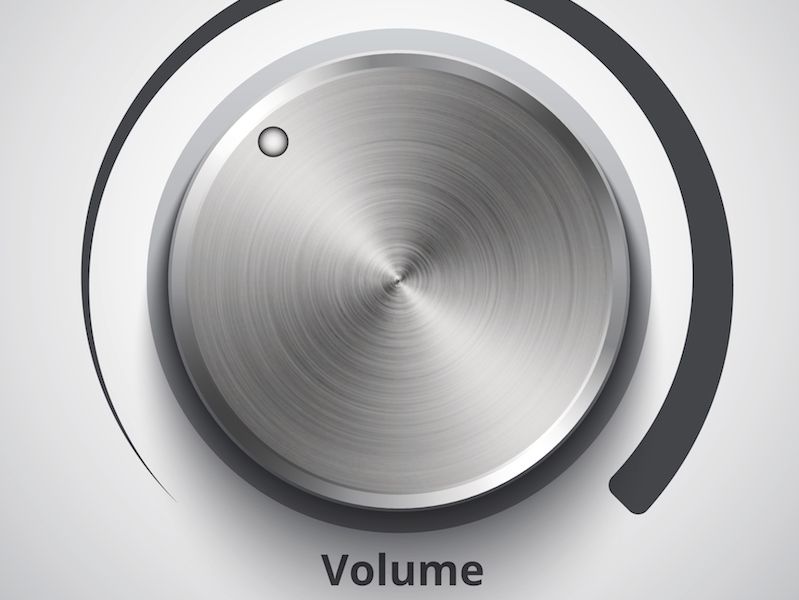You ever go to the beach and see one of those “Beware of Shark” warning signs? It’s not exactly a warning you dismiss. A sign like that (especially if written in big, red letters) might even make you reconsider your swim altogether. But people usually don’t heed cautions about their hearing in the same way for some reason.
Recent research has found that millions of individuals neglect warning signs regarding their hearing (there’s no doubt that this is a global concern, though this research was specifically conducted in the UK). Part of the issue is awareness. To be afraid of sharks is fairly intuitive. But fear of loud noise? And how do you recognize how loud is too loud?
Loud And Dangerous Sound is Everywhere Around us
It isn’t only the machine shop floor or rock concert that present dangers to your ears (although both of those situations are, without a doubt, dangerous to your hearing). Many every-day sounds are potentially hazardous. That’s because exposure time is as harmful as the volume. Even lower-level noises, like dense city traffic, can be dangerous to your hearing if you are exposed for more than two hours.
keep reading to find out when sound gets too loud:
- 30 dB: This is the sound level you would find in normal conversation. You should be perfectly fine at this level for an indefinite time period.
- 80 – 85 dB: This is the volume of heavy traffic, a lawnmower, or an air conditioning unit. This volume will usually become dangerous after two hours of exposure.
- 90 – 95 dB: Think of how loud a motorcycle is. This amount of exposure gets dangerous in as little as 50 minutes of exposure.
- 100 dB: An oncoming subway train or a mid-sized sports event are at this sound level (of course, this depends on the city). 15 minutes of exposure will be enough to be dangerous at this sound level.
- 110 dB: Do you ever crank the volume on your earpods up to max? On most smartphones, that’s right around this volume. 5 minutes will be enough to be dangerous at this volume.
- 120 dB and over: Immediate pain and damage can happen at or above this level (consider an arena sized sporting event or rock show).
How Loud is 85 Decibels?
Generally speaking, you’re hearing is at risk when you’re experiencing any sound 85 dB or louder. But it can be difficult to know how loud 85 dB is and that’s the issue. It’s not tangible the way that a shark is tangible.
And that’s one of the reasons why hearing warnings frequently go neglected, when the sound environment isn’t loud enough to cause pain, this is specifically true. Here are a couple of potential solutions:
- Download an app: Your ears can’t be immediately safeguarded with an app. But there are a number of free apps that can function as sound level monitors. It’s hard to determine what 85 dB feels like so your ears can be injured without you even realizing it. Making use of this app to monitor noise levels, then, is the answer. Using this approach will make it more instinctive to identify when you are going into the “danger zone”. (Or, the app will merely alert you to when things get too noisy).
- Suitable signage and training: This especially pertains to the workplace. The significant hazards of hearing loss can be reinforced by training and sufficient signage (and the advantages of protecting your hearing). Signage could also inform you just how noisy your workplace is. Training can help employees know when hearing protection is required or suggested.
When in Doubt: Protect
Apps and signage aren’t a foolproof answer. So if you’re in doubt, take the time to safeguard your ears. Over a long enough period of time, noise damage will almost definitely create hearing problems. And it’s easier than it ever has been to harm your ears (all you have to do is turn your headphone volume up a little too loud).
You shouldn’t raise the volume past mid way, specifically if you’re listening all day. You need noise blocking headphones if you are continually cranking up the volume to cover up background sound.
So when volume becomes too loud, it’s essential to acknowledge it. Raising your own understanding and awareness is the key if you want to do that. It’s not hard to minimize your exposure or at least use hearing protection. That begins with a little recognition of when you need to do it.
Nowadays that should also be easier. Especially now that you know what to look for.
Think you might have hearing loss? Schedule a test.
[blogcta]

